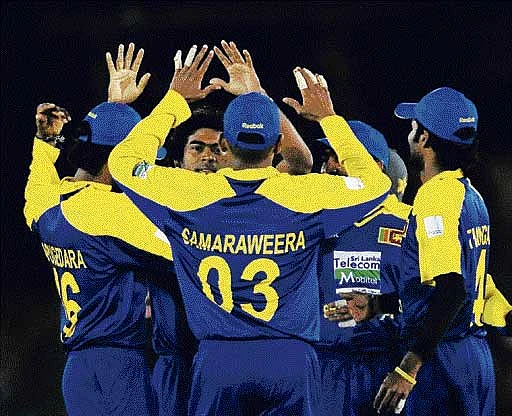

Barring a handful of trumpets and drums that come to life occasionally, the Rangiri Dambulla International stadium does not give you the feel of being in a sub-continent cricket stadium, usually a cauldron of noise, colour and banners. This venue resembles a memorial park where silence is ritualistically observed.
If the presence of crowds is any indicator of a sporting event’s success, then the 10th edition of cricket’s Asia Cup falls way behind the accepted parameters. Not even a game involving Sri Lanka has seen a full house.
When India played Bangladesh in their tournament opener, there were barely 200 spectators at the ground. The high-voltage India-Pakistan clash too attracted a sparse gathering despite the gates being thrown open. It might have been a shock for India’s cricketers, accustomed to roaring fans and fluttering flags, to play in pin-drop quietness. One Indian cricketer said, “Tt feels like playing in domestic cricket. However, Dambulla has not seen much crowd over the years for one-day cricket. Here you might get more spectators for a T20 game,” he added.
The wisdom behind the decision to hold the Asia Cup at Dambulla is certainly ambiguous and the folly of the move is being laid bare now. The inadequate lighting, which Lankan pacer Lasith Malinga termed as ‘not up to international standards’, has made playing under lights a hazardous venture.
“There is enough light in the batting square but towards the ropes the lighting is very insufficient, making it tough to take high catches. Sometimes, you can’t properly see the ball speeding along the ground,” one of the team members said.
Faulty light towers
India’s match against Bangladesh a couple of days ago had to be stopped for a while as two light towers in the mid-wicket area stopped functioning. The insufficient lighting has also made the matches one-dimensional, sparing the four captains the trouble of pondering over the move if they win the toss. Here it’s very basic, call correct and bat first with conditions taking care of the rest of the proceedings.
This tournament could have been a platform for teams to start looking at various strategies for World Cup 2011, but the lop-sided nature of the matches have totally spoiled that chance and so far it has been like watching a movie after being told what the climax is.
Defending the decision to hold matches in Dambulla, a top Sri Lanka Cricket (SLC) official said, “Apart from being a lovely place to visit, it won’t rain here too much at this point of time. The monsoon is restricted to Colombo and nearby areas in June.” Wise enough to know the weather pattern, they should also have taken into account the issue surrounding the lighting at the venue. Assembling a new set of floodlit towers at a cricket stadium is no rocket science and it can be done in a month’s time, but the powers that be were either not aware of the difficulties that insufficient lighting can create or they overlooked it. They also failed to explore the option of conducting the matches at day-time as that would have provided a touch of evenness to the contest besides enabling fans from Colombo and Kandy to reach this trade hub.
At a time when the future of one-day cricket is under scrutiny, such matches that lack energy and edge can only add strength to the voice of the format’s doomsayers. The timing of the tournament too has gone horribly wrong. It’s tough to generate viewership for any other sporting event when the whole world is focused on the FIFA World Cup, currently under way in South Africa.
But then, proper planning has never the forte of the wise men ruling this sport. Another baffling point is that Dambulla will not stage a single World Cup match next year and the Sri Lanka Cricket is building two new stadiums at Pallekkele and Habbantota for the mega event.
If the facilities at Dambulla are good, then why is this picturesque venue not hosting even one of the 12 World Cup matches? If the amenities here are not up to the mark to stage a World Cup match, then how can as significant an event as the Asia Cup, the symbol of supremacy in the continent, be held here?
We might have to believe that a rather deliberate apathy is being shown to a tournament, perhaps reduced to a means to fill the coffers, struggling for frequency and a proper place in the Future Tours Programme over the years.
Ashraful Haq, chairman of the Asian Cricket Council, had remarked a few days back, “The media has always supported us in the past and hopefully they will project the positives of this tournament.” On hindsight, those words sound like an excuse in anticipation.
